Malawi Flag Meaning
Three horizontal stripes of black, red, and green with a red rising sun in the upper left corner, representing the African people, the blood of freedom fighters, the land's fertility, and the dawn of freedom and hope.
- Continent
- Africa
- Adopted
- 1964
- Ratio
- 2:3
- Colors
- black, red, green
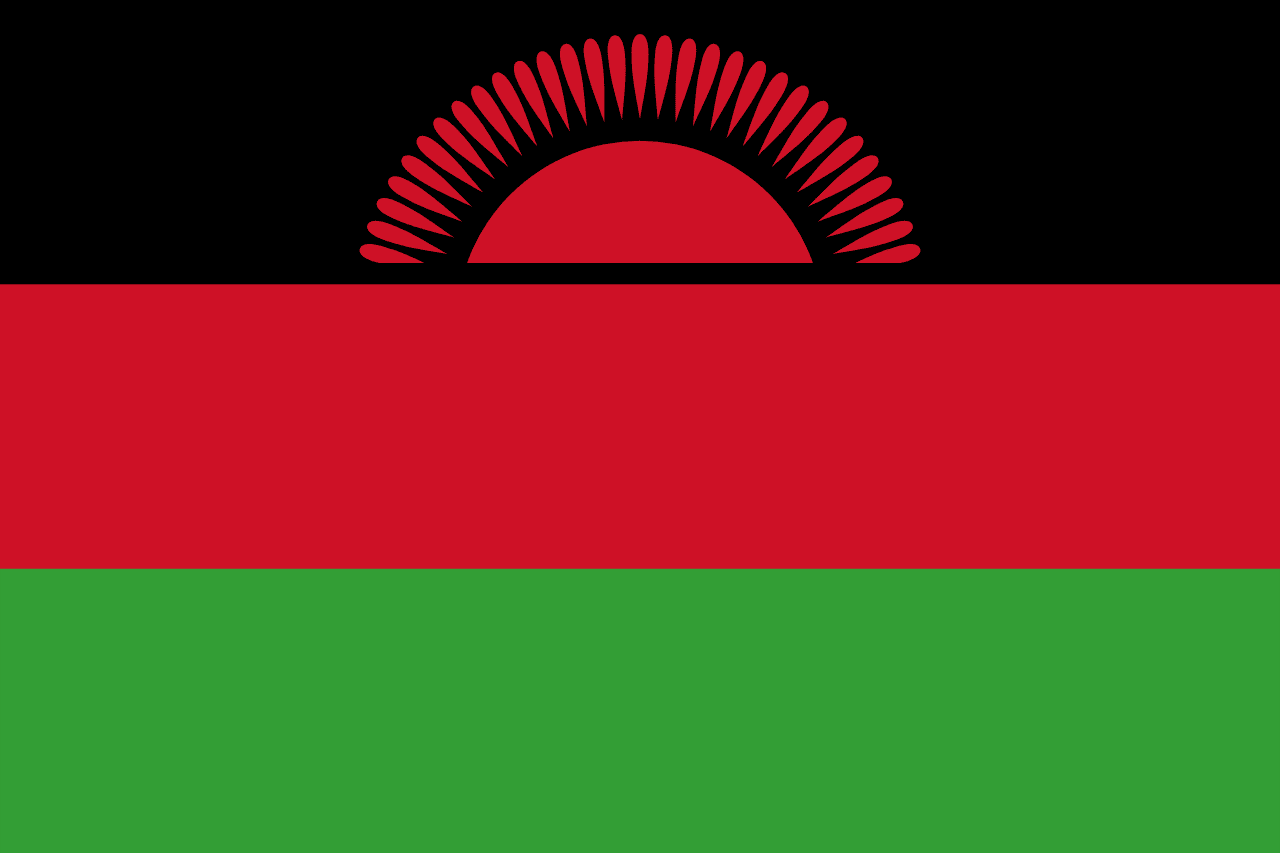
Symbolism
Black Stripe: Represents the African people of Malawi and the broader African continent, emphasizing Malawi's identity as part of the African family of nations and pride in African heritage.
Red Stripe: Symbolizes the blood shed by freedom fighters during the struggle for independence from British colonial rule, honoring those who sacrificed for Malawi's liberation and sovereignty.
Green Stripe: Represents the rich agricultural land and lush vegetation of Malawi, symbolizing the country's natural beauty, fertility, and the hope for agricultural prosperity and food security.
Rising Sun: Symbolizes the dawn of freedom and hope for Africa, representing Malawi's independence and the bright future that lay ahead after centuries of colonial rule and oppression.
Pan-African Colors: The black, red, and green color combination connects Malawi to the broader Pan-African movement and solidarity with other African nations in their struggles for independence and development.
History
- 1891-1964: The region was the British protectorate of Nyasaland, using British colonial flags while traditional kingdoms like those of the Chewa, Yao, and Tumbuka peoples maintained their own symbols.
- 1953-1963: Nyasaland was part of the Central African Federation with Northern and Southern Rhodesia, using federation symbols while nationalist movements grew stronger under leaders like Hastings Banda.
- July 6, 1964: Malawi gained independence from Britain under Prime Minister Hastings Banda, and the current flag was adopted to represent the new nation's hopes and African identity.
- 1966: Malawi became a republic with Hastings Banda as president, but the flag remained unchanged, serving as a symbol of continuity from independence through the new republican government.
- 1964-2010: The original flag served Malawi for 46 years through the long rule of Hastings Banda and the transition to multi-party democracy in the 1990s.
- July 29, 2010: President Bingu wa Mutharika changed the flag, replacing the rising sun with a full sun and altering the stripe order, claiming to represent progress since independence.
- May 28, 2012: Following public protests and political pressure, President Joyce Banda restored the original 1964 flag design, honoring popular sentiment and historical tradition.
Trivia
- Malawi is one of the few African countries to have temporarily changed its flag and then restored the original design due to popular demand in 2012.
- The flag represents 'The Warm Heart of Africa,' Malawi's tourism slogan that reflects the friendly and welcoming nature of the Malawian people.
- Lake Malawi (Lake Nyasa) covers about 20% of the country's total area and is one of the African Great Lakes, though it's not directly represented on the flag.
- The rising sun on Malawi's flag was inspired by the Pan-African movement and specifically represents the dawn of freedom not just for Malawi but for all of Africa.
- Malawi is one of the least developed countries in the world, making the flag's symbolism of hope and agricultural potential particularly meaningful for development efforts.
- The flag appears on Malawian kwacha banknotes alongside images of agricultural products like tobacco and tea, which are crucial to the national economy.
- Hastings Banda ruled Malawi as a dictator for 30 years, but the flag survived the transition to democracy, showing its acceptance across different political systems.
- The 2010-2012 flag controversy demonstrated the emotional attachment Malawians have to their national symbols, leading to rare successful public pressure to reverse a flag change.
- Malawi is a landlocked country surrounded by Mozambique, Zambia, and Tanzania, and the flag represents the unity needed to overcome geographic isolation.
- The flag appears prominently during the annual Lake of Stars music festival, which celebrates Malawian culture and attracts international visitors to the country.
- Traditional Malawian chiefs still play important roles in governance, and the flag appears during traditional ceremonies alongside customary symbols and regalia.
- Malawi's flag protocol requires it to be displayed during Independence Day celebrations on July 6, when the country commemorates freedom from British rule.
- The flag represents a country where agriculture employs about 85% of the population, making the green stripe's agricultural symbolism central to national identity.
- Malawian athletes compete under this flag in international competitions, particularly in boxing and football, where the country has achieved some regional success.
- The flag appears at SADC (Southern African Development Community) meetings, where Malawi plays an active role in regional economic cooperation and development initiatives.
Related Countries
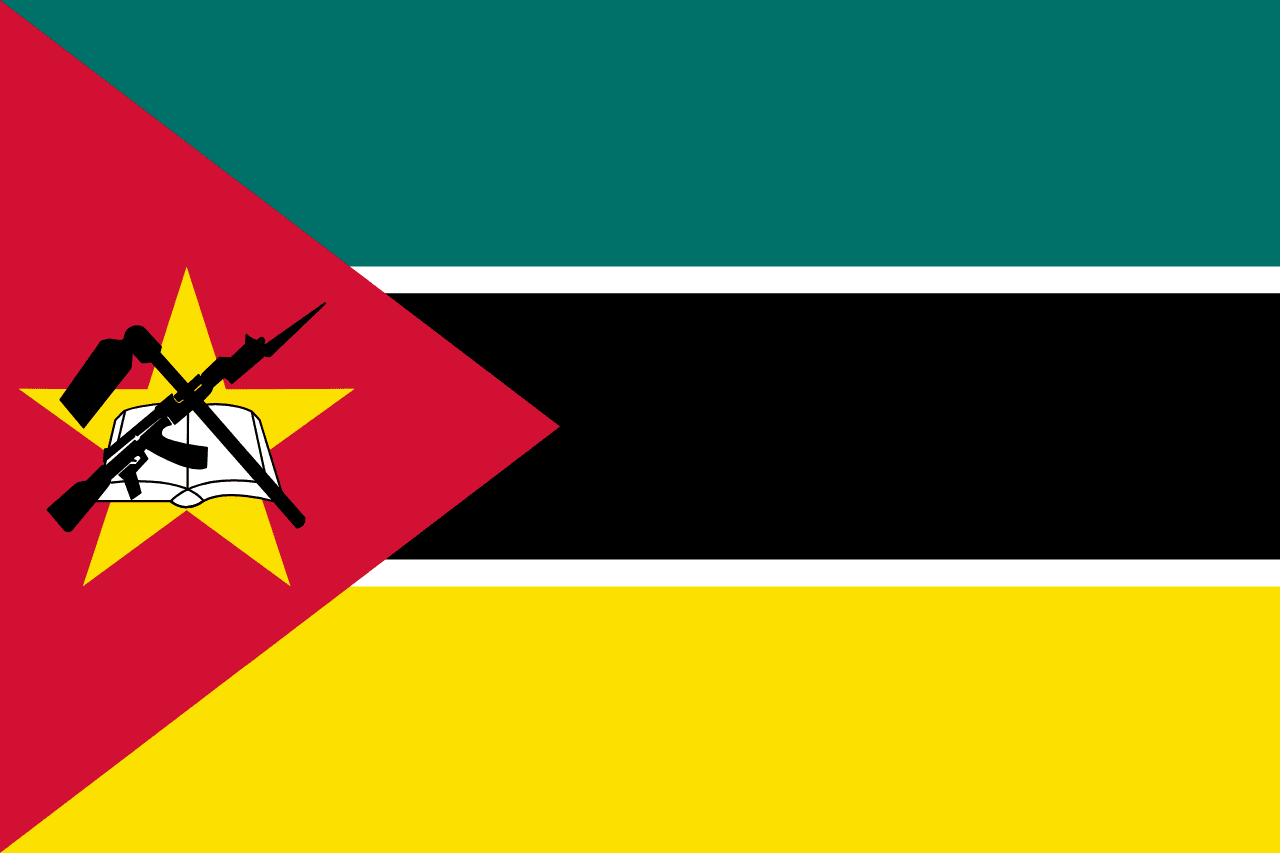
Mozambique
Africa
A horizontal tricolor of green, black, and yellow, separated by white fimbriations, with a red triangle at the hoist bearing a yellow star, a book, a hoe, and an AK-47 with bayonet. The flag uniquely features a modern weapon as a national symbol.
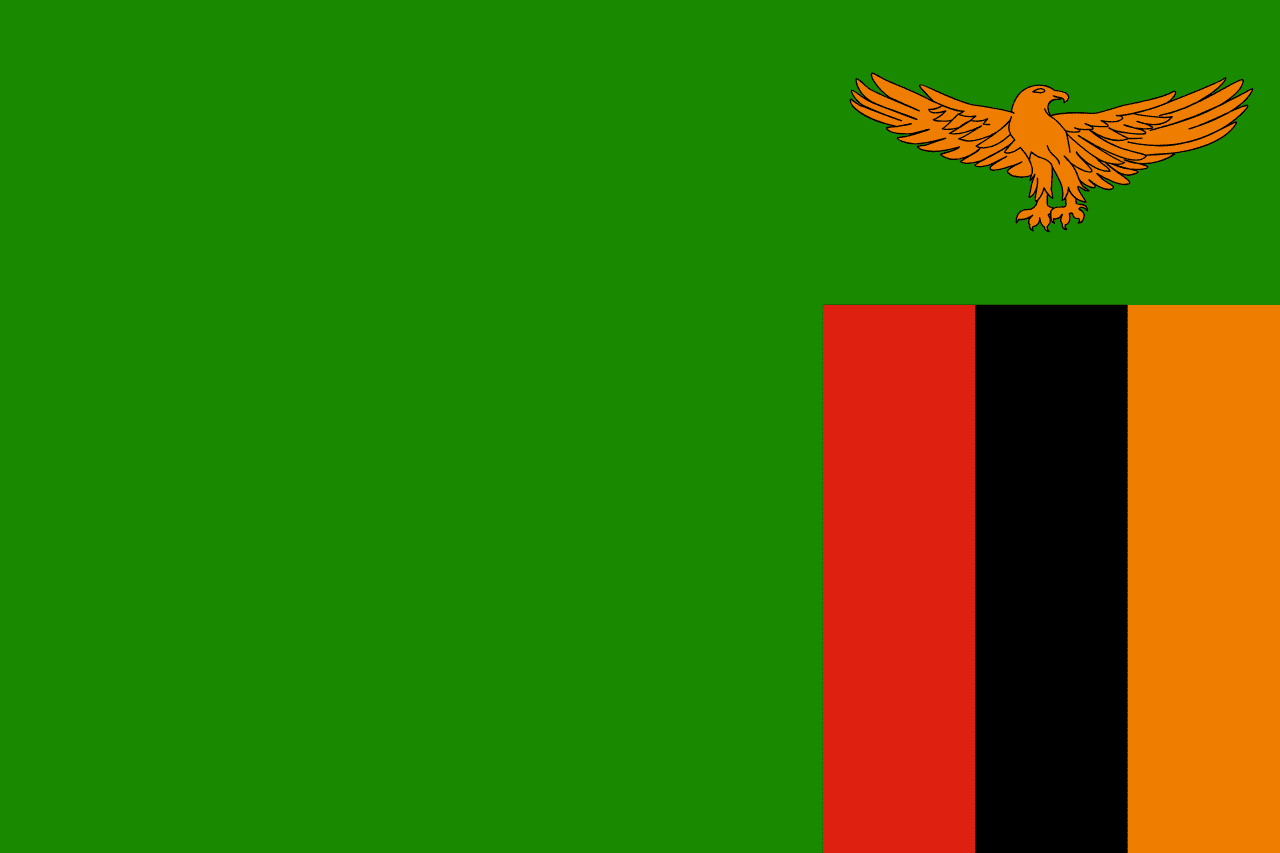
Zambia
Africa
A green field with three vertical stripes of red, black, and orange in the lower right corner and an orange eagle above the stripes, representing the country's natural wealth, the struggle for freedom, the African heritage, the mineral wealth (particularly copper), and the ability to rise above problems.
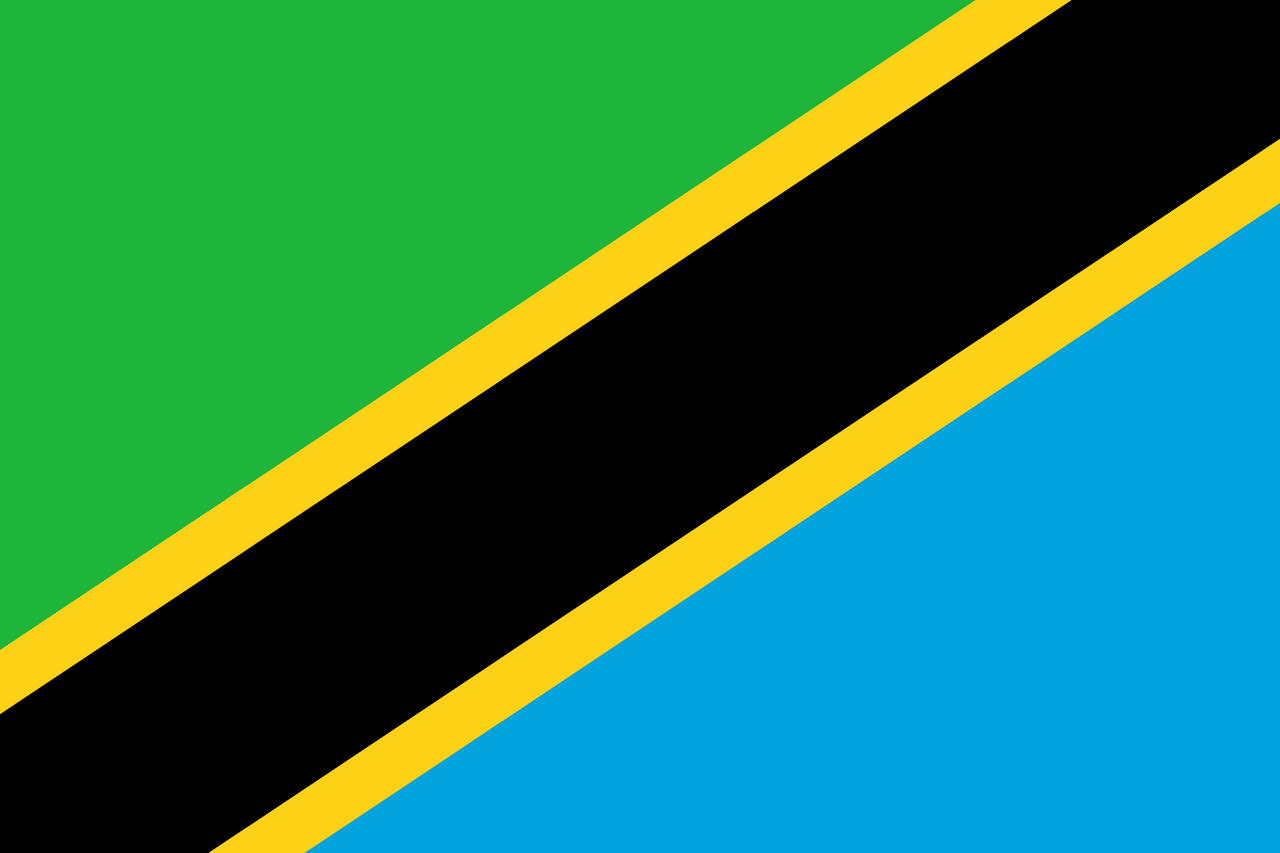
Tanzania
Africa
A green triangle in the upper hoist, a blue triangle in the lower fly, separated by a diagonal black stripe bordered by yellow stripes, representing the country's agriculture and forests, mineral wealth, the African people, and the Indian Ocean, symbolizing the union of Tanganyika and Zanzibar.
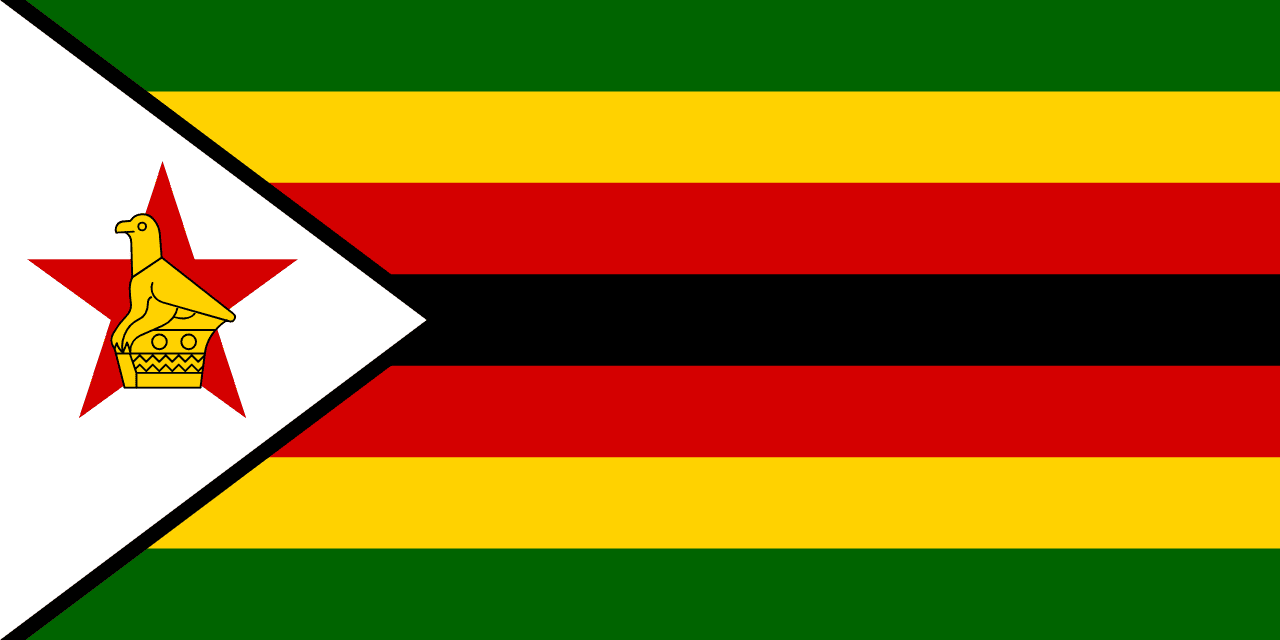
Zimbabwe
Africa
Seven horizontal stripes alternating green, yellow, red, black, red, yellow, green with a white triangle at the hoist containing a red five-pointed star and the Zimbabwe Bird, representing the nation's agricultural wealth, mineral resources, blood shed for independence, the African people, peace, and the ancient civilization of Great Zimbabwe.
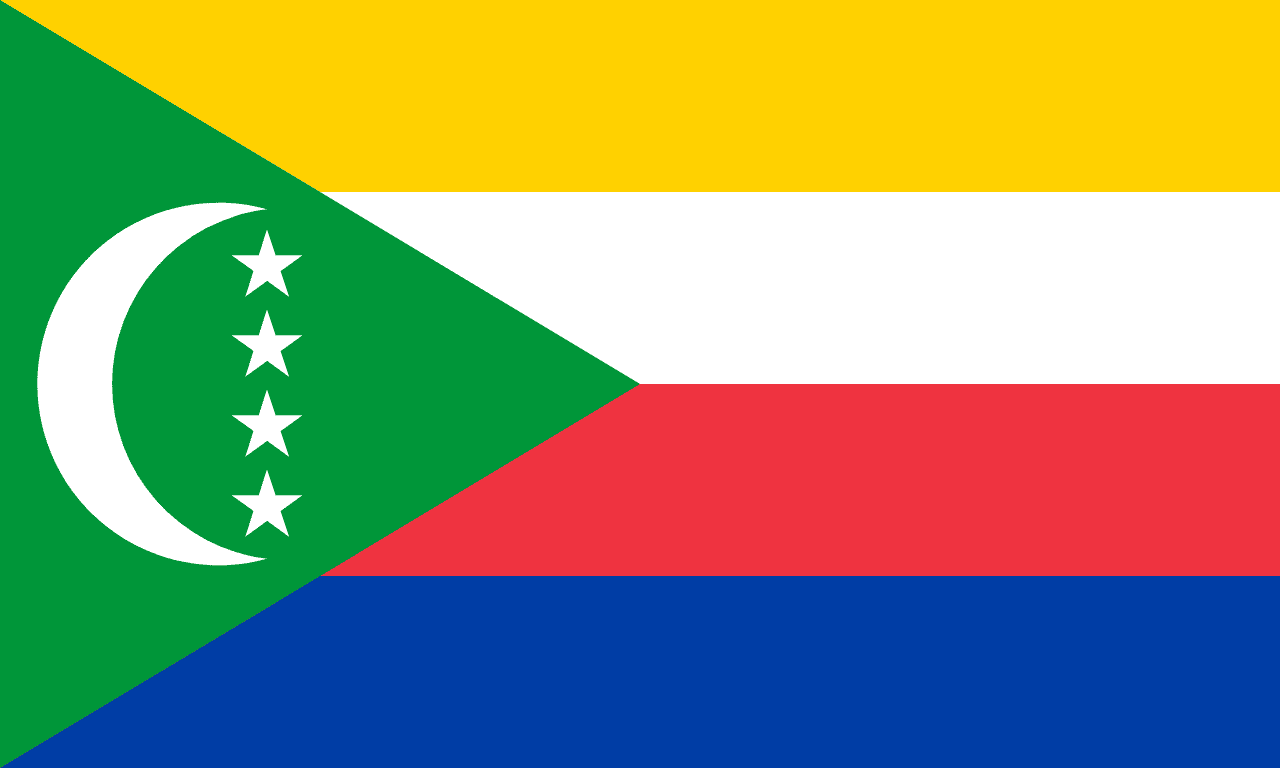
Comoros
Africa
Four horizontal stripes of yellow, white, red, and blue with a green triangle at the hoist containing a white crescent and four white stars, representing the four islands, Islamic faith, and the pan-African heritage of this Indian Ocean archipelago.
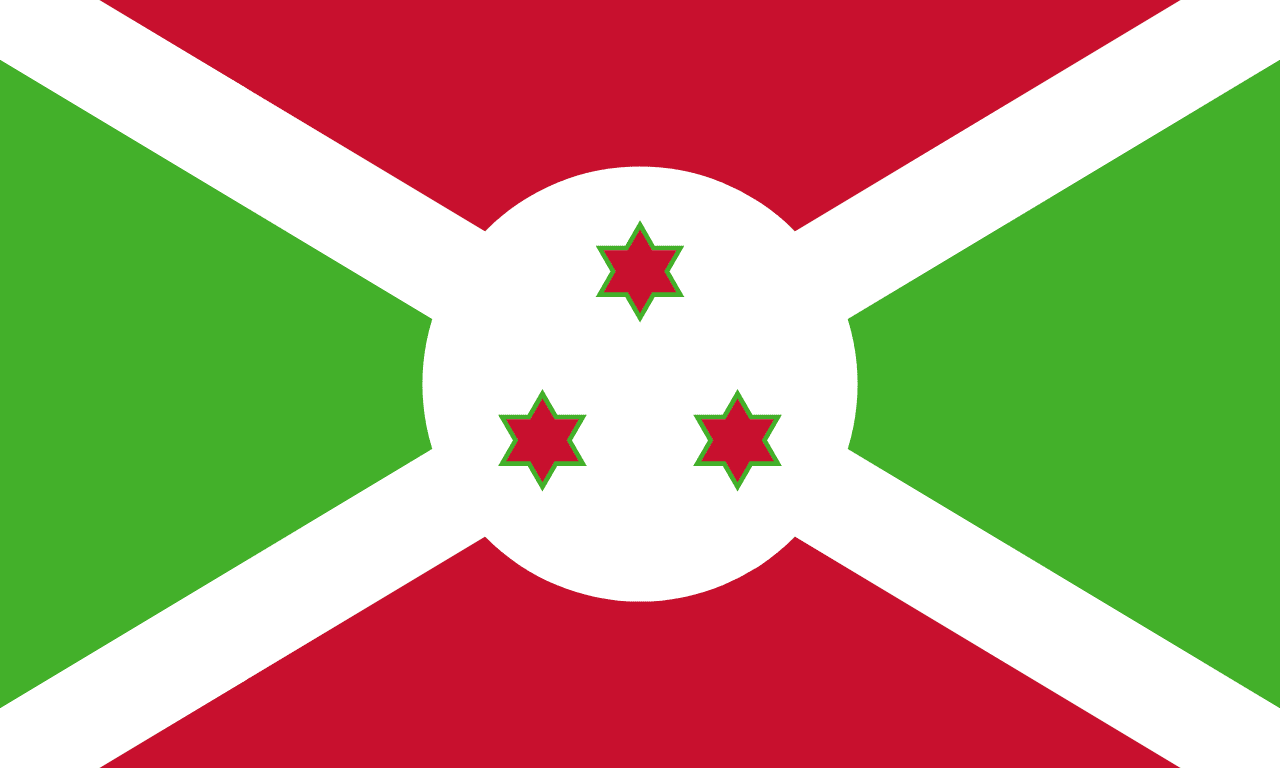
Burundi
Africa
A white diagonal cross dividing the flag into alternating red and green triangles, with three red stars outlined in green in the center circle, representing unity, work, progress, and the three ethnic groups of Burundi.